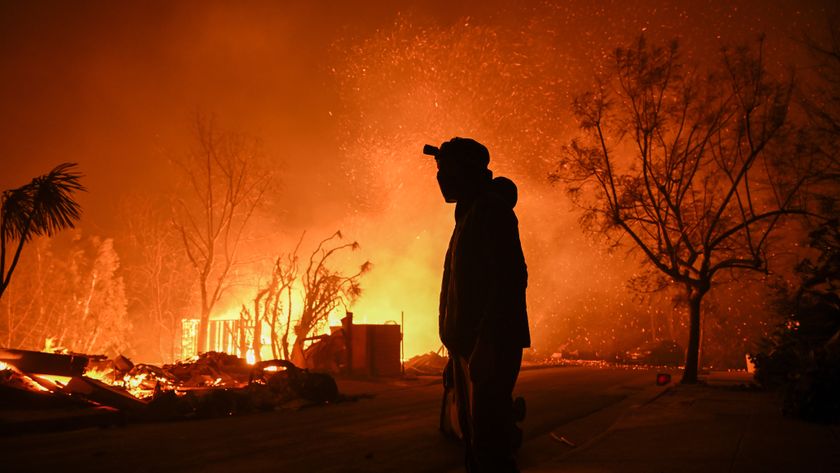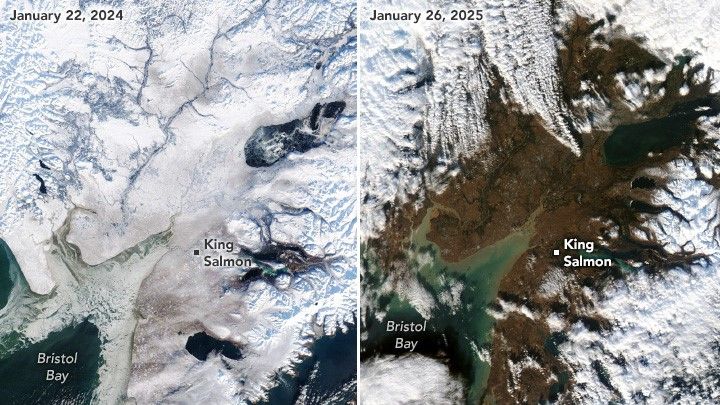Unusually Warm Winter, But Is It Climate Change?

In Washington, D.C., the annual cherry blossom festival has been moved up thanks to signs of early an bloom; in New York City, a winter festival was canceled because temperatures were too high for artificial snow; and in many other cities, big savings have been realized without snow and ice to clear from roads.
In parts of the United States and Canada, this winter has been so remarkably mild some have dubbed it "the year without winter." For some, however, this reprieve from the cold brings a hint of something more ominous: climate change.
Although the connection may seem natural, it's one climate scientists shy from.
"We typically give the canned answer: 'No single event can be pinned on climate change," said Deke Arndt, chief of the climate monitoring branch at the U.S. National Climatic Data Center. "But it is the backdrop for a lot of weather patterns that play out, so the challenge is determining how much of a role it is playing." [6 Signs Spring Has Sprung]
However, by trying to assess what's going on with this mild season, "we are looking at the trees and not the forest. We have to pull back and say, 'How does this season fit into the longer-term picture?'" Arndt said.
It's not your imagination
Over the long term, records show the world is warming. Global average surface temperature crept up by 1.3 degrees Fahrenheit (0.7 degrees Celsius) between 1900 and 2000, and the first decade of this century ranked as the warmest on record, according to the U.S. National Oceanic & Atmospheric Administration's State of Climate in 2010 report.
Sign up for the Live Science daily newsletter now
Get the world’s most fascinating discoveries delivered straight to your inbox.
So mild weather this winter hasn't come out of the blue. "It's consistent with the idea that global warming is going on," said Kevin Trenberth, a senior scientist at the independent National Center for Atmospheric Research (NCAR) in Boulder, Colo.
Natural variability and just plain luck, however, may play a prominent role in why winter is warmer this year, scientists say.
When attempting to describe how they think global climate change will affect weather, climate scientists tend to use metaphors along the lines of playing with a loaded dice or a baseball player on steroids. Both describe a shift in the overall results, a shift toward more extreme weather and warmer temperatures.
Bigger patterns at work
Climate scientists and meteorologists point to the jet stream — high-altitude, westerly winds — as the most immediate cause for the unusually warm weather in much of the United States and Canada, as well as the frigid spell centered in Eastern Europe this year.
Recent winters have brought extreme configurations of the jet stream, which can keep cold Arctic air bottled up in the north, or allow it to spill down to the south, according to Jeff Masters, director of meteorology at the weather service and news site Weather Underground.
"The jet stream is doing some really wacky things," Masters said.
The most prominent natural pattern behind the polar jet stream is the Arctic Oscillation or the Northern Annular Mode, which describes fluctuations in air pressure over the far north. It's not clear why the oscillation is varying so much from winter to winter or why it's gone to extremes in the past six years, Masters wrote on his blog.
Our fingerprints?
The general trend toward a warmer planet may also be indirectly affecting weather. New research points to melting Arctic sea ice — with the last summer, arguably, setting a record for lowest extent—as a contributor to shifts in weather in the Northern Hemisphere.
The decline in sea ice, as well as earlier snow melt in the Arctic, appears to be weakening the jet stream, resulting in more persistent weather (think extended snow or stints of heat waves) and more influxes of cold air to the south, as well as more warmth to the north, Jennifer Francis, a research professor at Rutgers University, writes in Yale Environment 360.
Other research has linked decreasing Arctic sea ice to unusually large snowfalls and cold surges in the Northern Hemisphere.
Other factors, man-made or not, may also play roles, Trenberth said.
The sun has become more active recently, after an unusually long quiet phase. And there is also speculation that the new Arctic ozone hole may have some influence. Both affect the stratosphere, a layer of the atmosphere, which, in turn, affects the Northern Annular Mode.
These factors "are rearing their heads in perhaps ways we don't understand," Trenberth said.
Editor's Note: This story was updated at 7:23 pm Eastern Time on March 6 to correct an error. The cherry blossoms in Washington D.C., are expected to reach peak bloom early this year, but have not yet begun to bloom.
You can follow LiveScience senior writer Wynne Parry on Twitter @Wynne_Parry. Follow LiveScience for the latest in science news and discoveries on Twitter @livescience and on Facebook.
Most Popular




